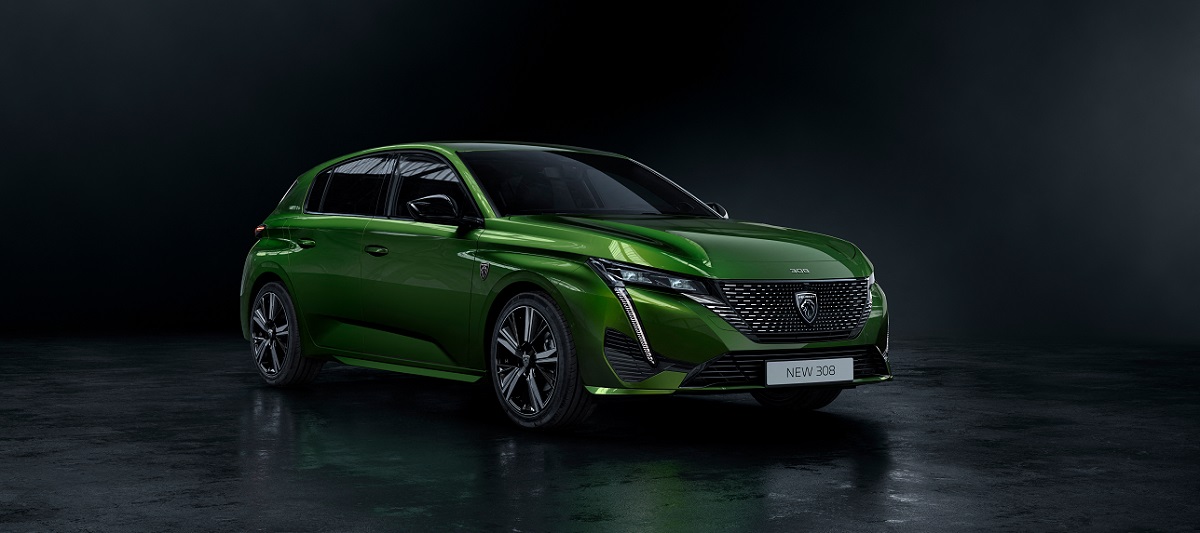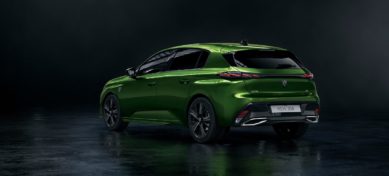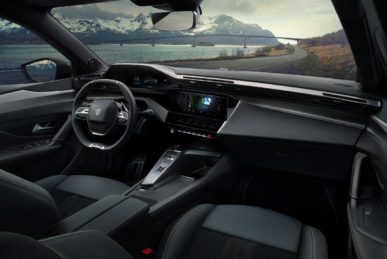The announcement made last month, Peugeot, in the early hours of Thursday morning, officially revealed the all-new 308 after almost eight years of the previous generation.
One of the first models to wear the French marque’s new retro inspired lion badge, the eleventh redesign since founding in 1850, Stellantis’ rival for the Volkswagen Golf, which will also provide the base for the next generation Opel Astra, is wholly new not only inside and out but also underneath the bonnet.
Mounted on a revised version of the PSA developed EMP2 platform, the 308 measures 4 360 mm in overall length with the wheelbase coming in at 2 675 mm and the height at 1 440 mm. Compared to its predecessor, the newcomer is 11 mm and 55 mm longer respectively while also being 20 mm lower.
RELATED: Peugeot launches restyled lion badge along with launch date of new 308
Boasting a boot that can swallow 412-litres of luggage, an increase of eight-litres over the old 308 with the rear seats up, and 1 323-litres with the rears down, the 308’s design, which from some angles resembles the Renault Megane, takes after that of the 208 in the shape of the expansive grille, LED strip that runs from the headlight down to the faux air vents on the bumper and three-claw motif taillights.
Equipped as standard with LED headlights or full Matrix LEDs on the top-spec GT and GT Premium models, the low slung 308 will ride on a selection of different alloy wheel sizes and designs, while also offering a choice of seven colours; Bianca White, Nera Black, Cumulus Grey, Pearlescent White, Elixir Red, Vertigo Blue and the Olivine Green launch hue.
Inside, the Peugeot i-Cockpit has been tweaked and in some places, redesigned with the biggest being a new push-button activated eight-speed automatic gearbox.
Aside from upgraded materials and finishes, the tech fest is dominated by a new ten-inch digital instrument cluster, a similarly sized touchscreen infotainment system on higher spec models and a series of virtual toggle switches for the climate control and radio.
In addition to a pair of Type C USB ports and Alcantara trim with the GT also receiving Adamite contrasting stitch work, the 308, depending on the trim level, comes with features such as embedded satellite navigation, Apple CarPlay and Android Auto, ambient lighting, wireless smartphone charging, a frameless rear-view mirror, heated seats and steering wheel and a ten-speaker, 690-watt Focal sound system.
A massive step-up are the range of safety and driver assistance technologies comprising of:
- Semi-automatic lane change assist
- Lane Keep Assist
- Blind Spot Monitoring
- Adaptive Cruise Control
- Autonomous Emergency Braking with Pedestrian and Cyclist Detection
- Rear Cross Traffic Alert
- Traffic Sign Recognition
- 360 degree surround view camera system
- 180 degree reverse camera
- Auto High Beam Assist
- Curve Speed Adaption up to 120 km/h
In terms of motivation, the European-spec 308 will have a choice of two conventional internal combustion engines and two plug-in hybrids, all paired to an eight-speed automatic gearbox with no manual option featuring for the very first time.
The conventional units comprise of the familiar three-cylinder 1.2 PureTech petrol rated at 96 kW and the 1.5 BlueHDI turbodiesel rated at the same output, while the plug-in hybrid combine the 1.6 PureTech petrol with an 81 kW electric motor in two states of tune; 132 kW and 165 kW.
While fitted as standard with a 3.7 kW on-board charger, the PHEVs will have the option of a more powerful 7.4 kW chargers that results in a waiting time of one hour 55 min connected to a 7.4 kW wallbox. The claimed all-electric range is 58 km for the former and 59 km for the latter.
Going on sale across the Old Continent from the second half of this year, Peugeot South Africa has so far remained mum on confirming the 308 for South Africa, but expect it to arrive next year powered by the PureTech petrol only if approved.
For more news your way, download The Citizen’s app for iOS and Android.



